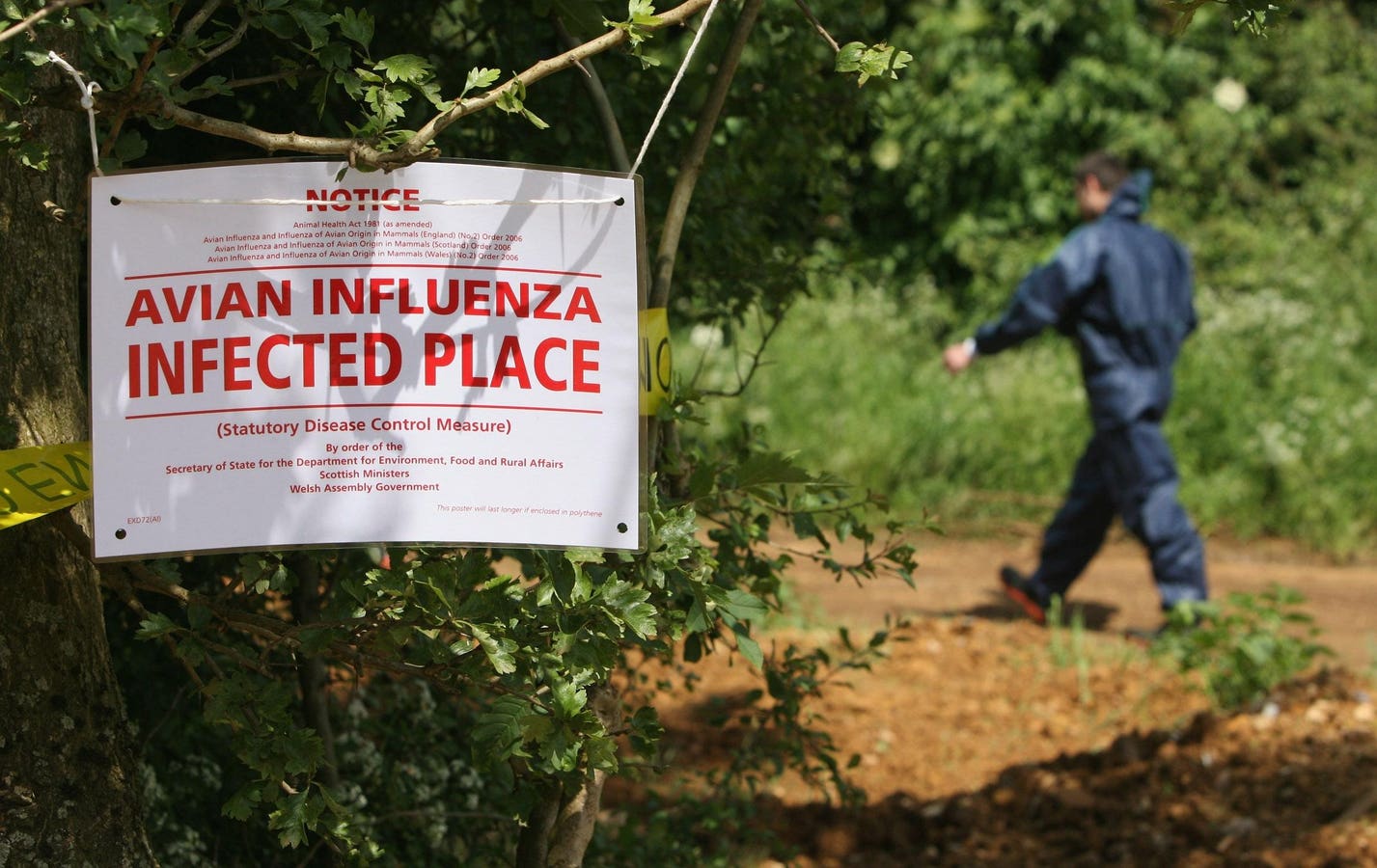As avian influenza viruses continue to affect bird populations throughout the world, researchers have explored various means of controlling this pathogen. On Tuesday, scientists reported in the journal Nature Communications the latest approach. Using the gene editing technique CRISPR-Cas9, they created genetically engineered chickens that exhibited significant resistance to these viruses. That’s the good news. The bad news? The viruses rapidly accumulated mutations that negated the effectiveness of this salvo. Moreover, these mutations may enable the viruses to replicate more efficiently in humans.
Highly pathogenic avian influenza viruses first were identified in the United States in early 2022. According to data from the Centers for Disease Control and Prevention, the virus has since spread throughout the country, affecting domestic and wild birds. To limit the spread among domestic flocks, farmers have culled millions of chickens. To protect wild birds, like the endangered California condor, researchers are investigating the efficacy of vaccination strategies. But more effective prevention strategies certainly are needed.
Here is where CRISPR-Cas 9 comes into play.
To replicate in chicken cells, avian influenza A viruses require the help of a specific protein present in these cells, ANP32A. The viruses typically cannot utilize the closely related chicken protein ANP32B or the homologous human proteins ANP32A or ANP32B. To a large extent, this requirement dictates the host range of the virus. Avian influenza viruses replicate poorly in human cells.
Because avian influenza viruses require the chicken ANP32A protein, investigators used CRISPR-Cas9 to specifically mutate the gene coding for this protein in chicken germ cells. Ultimately, they were able to breed a small flock of birds containing mutated ANP32A.
When these genetically engineered birds were exposed to low doses of avian influenza virus, nine out of ten showed no signs of viral infections. In contrast, all birds in the study that were not genetically engineered became infected. When chickens were experimentally inoculated with a higher dose of virus, the same trend was observed, although the results were less definitive.
These results were encouraging, but also raised some concerns.
Because some genetically engineered chickens did become infected, the researchers isolated and analyzed viruses obtained from these birds, so-called escape viruses. We know that viruses mutate extensively. The question the researchers asked, then, was quite simple. Were specific mutations present in these escape viruses? The short answer? Yes.
The scientists sequenced the genomes of escape viruses and compared them to the sequence of the original virus. In all cases, mutations were observed, primarily in two viral genes associated with replication. Apparently, the changes to ANP32A in the chickens selected for viral mutants capable of bypassing this host change.
Obviously, the appearance of these viral mutants raises questions about the long-term effectiveness of this strategy. The virus, it appears, can circumvent ANP32A alterations. For this gene editing strategy to be maximally effective, then, the authors suggest that multiple genes in the chicken may need to be altered. This, however, could negatively affect the general health of the birds.
Additional data presented by the authors suggests an even greater concern. In vitro tests showed that the mutations that accumulated in the escape viruses allowed them to interact with the human ANP32A and ANP32B proteins. In other words, the generation of ANP32A-edited chickens ultimately may lead to the evolution of avian influenza viruses able to replicate in us.
The authors readily note this concern. They also emphasize that they have not created a human threat. Various factors, not just the use of ANP32, determine the general inability of avian influenza viruses to infect humans. Indeed, entry into humans and binding to susceptible human cells also represent significant barriers. But this work does show that research can have unintended consequences. The generation of genetically engineered chickens led to the accumulation of mutations that altered the virus’s use of ANP32. Mutations allowing the virus to bypass the other host range barriers also may be possible.
As Jeff Goldblum’s character says in Jurassic Park, “Life finds a way.”
Read the full article here





